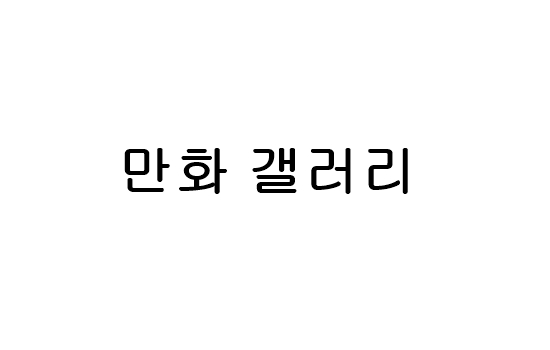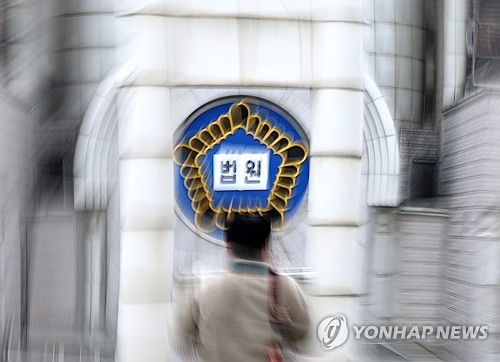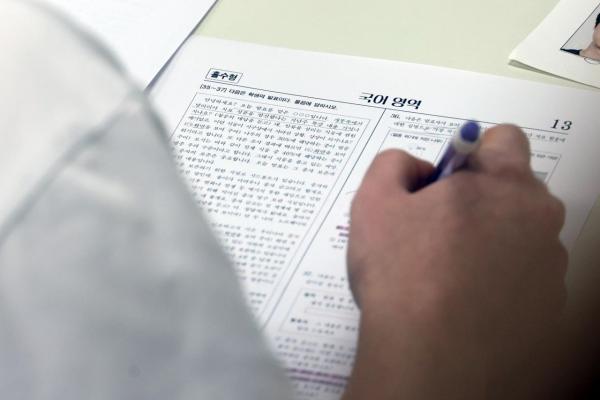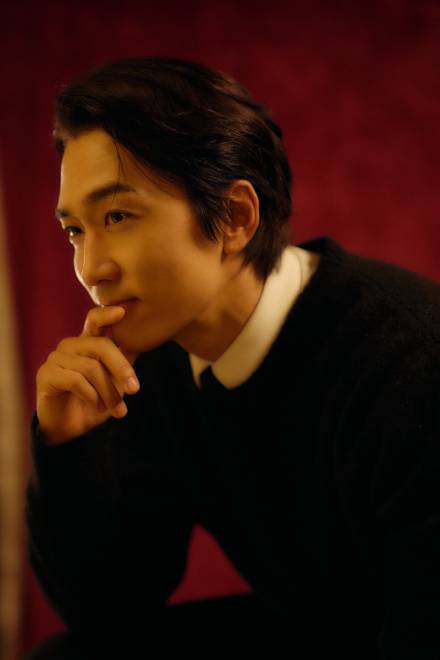
The Korean is taller than the Japanese, although rarely more than 5½ feet, with a strong build, and well-balanced features, calm and nimble. The shape of his face in general has the characteristics of the Mongolian race.
However, in the facial features of the Koreans one can see the characteristics of two races. The nose that is flat next to the corners of the eyes, then spreads wide lower down, the slanted eyes that stand far apart, and the more prominent cheekbones are marks of the race described above; but if the top of the nose is high, and the nose more pronounced, then the facial features are closer to those of the Caucasians, and the shape of the eyes, too, becomes more like that of Europeans. Here the cheekbones are less pronounced, and the sharp profile that is absent in the Mongolian race becomes visible. The closer a person’s facial features are to the race described first, the less beard that person will have, whereas individuals with a sharp profile often have quite a heavy beard. The skull of the latter is less compressed, their foreheads are straighter, rather than sloping back, and in their entire appearance they possess a kind of nobility, which is missing in the rough features of the Mongols.
조선인은 일본인보다 키가 크지만 5½피트를 넘는 경우는 드물며, 튼튼한 체격과 균형 잡힌 이목구비, 차분하고 민첩한 모습을 가지고 있다. 전반적으로 그의 얼굴 모양은 몽골 민족의 특징을 가지고 있다.
그러나 조선인의 얼굴 생김새에서 두 인종의 특징을 볼 수 있다. 눈꼬리 옆이 납작하고 아래쪽으로 넓게 퍼지는 코, 멀리 떨어져있는 기울어 진 눈, 더 두드러진 광대뼈는 위에서 설명한 민족의 특징이지만 코끝이 높고 코가 더 뚜렷하면 얼굴 특징이 백인에 더 가까워지고 눈 모양도 유럽인과 더 비슷해진다. 여기서 광대뼈는 덜 뚜렷하고 몽골 민족에서는 찾아볼 수 없는 날카로운 옆모습이 눈에 띈다. 얼굴 생김새가 몽골인에 가까울수록 수염이 줄어들지만, 이목구비가 날카로운 사람은 수염이 꽤 굵은 경우가 많다. 후자의 두개골은 덜 압축되고 이마는 뒤로 기울어지지 않고 곧게 펴져 있으며 전체 외모에서 몽골인의 거친 특징에는 없는 일종의 고귀함을 가지고 있다.

Their physiognomy bears witness to an origin different to that of the Chinese, and has unmistakable traces of a descent from two distinct races. Of a taller and more powerful make than the natives of China and Japan, with a cast of features thoroughly pleasing, and endowed with a firm and energetic character, they remind us much more forcibly of the half-savage hordes and nomadic tribes of Mongolia and northern Asia than of the natives of the two countries just named.
With regard to the size mentioned by Siebold (five and a half feet), I cannot, however, agree with his statement, nor is it to be considered as correct, as the number of people exceeding this measure was the majority. I can, however, fully subscribe to his concluding remarks. The features of a very considerable portion of the natives I had an opportunity to see during my travels in the country bore an expression so noble and so marked, that they might have passed for Europeans, had they been dressed after our fashion.
그들의 생김새는 중국인과는 다른 기원을 증명하며, 두 개의 다른 종족에서 유래한 흔적이 분명하다. 중국과 일본의 원주민보다 키가 크고 힘이 세며, 이목구비가 매우 매력적이고 단단하고 활기찬 성격을 지닌 이들은 방금 언급한 두 나라의 원주민보다 몽골과 북아시아의 반 야만인 무리나 유목민 부족을 훨씬 더 강하게 떠올리게 한다.
그러나 시볼드가 언급한 크기(5½피트)와 관련해서는 이 기준을 초과하는 사람이 대다수였기 때문에 그의 주장에 동의할 수 없으며, 올바른 것으로 간주할 수도 없다. 그러나 그의 결론에 대해서는 동의할 수 있다. 내가 이 나라를 여행하는 동안 볼 기회가 있었던 원주민의 상당수의 특징은 매우 고상하고 뚜렷한 표정을 지녔기 때문에 그들이 우리 패션을 따라 옷을 입었다면 유럽인으로 지나쳤을 수도 있다.

As a race the Koreans are considerably larger men than the Japanese, and at the same time incomparably slower and more clumsy in their movements. They have none of the rapid energy, either of body or mind, which so eminently distinguishes the native of Japan, and but little of the doggedly persevering characteristics of the Chinese. There is, indeed, enough of evident distinction between the races to lend probability to the theory that the Korean population is the result of a mixture of a Mongolian with an Indo-Germanic race. Here and there a Korean may be met with, especially among the upper class, whose appearance is in nearly every respect far more European than Asiatic, and while such cases are in a very small minority of the whole people, there is yet even among all classes something which, although difficult to define, seems to indicate an admixture of race.
조선인들은 일본인들보다 덩치가 상당히 크고, 동시에 비교할 수 없을 정도로 느리고 동작이 서툴다. 조선인에게는 일본인과 두드러지게 구별되는 신체나 정신의 빠른 에너지를 가지고 있지 않으며 중국인의 끈질긴 인내심도 거의 가지고 있지 않다. 실제로 조선인은 몽골계와 인도-게르만계가 혼합된 결과라는 이론에 확신을 줄 수 있을 만큼 인종 간 차이가 분명하다. 여기저기서, 특히 상류층 사이에서 거의 모든 면에서 아시아인보다 훨씬 더 유럽적인 외모를 가진 조선인을 만날 수 있으며, 그러한 경우는 전체 국민의 극소수이지만, 정의하기는 어렵지만 모든 계층 사이에서도 인종이 혼합된 것으로 보이는 어떤 것이 존재한다.

In appearance the Korean differs materially from his neighbors, the inhabitants of China and Japan, the coloring matter in his skin belonging to a different class from either.
Their eyes do not have the slanting appearance noticed in their neighbors, and the aquiline nose is not a rarity.
외모면에서 조선인은 이웃 인 중국과 일본의 주민들과 다르며 피부색도 어느 쪽과도 다르다.
그들의 눈은 이웃 사람들에게서 볼 수 있는 기울어 진 모양이 없으며 매부리코는 드물지 않다.
Korea's case is one of degeneracy as to both civilization and stamina. Finer-looking than the Chinese, taller than the Japanese, these men in white coats starched to a luster that excels our shirt fronts, and in big hats and with long pipes, are jolly and good-natured fellows for the most part. Yet they lack moral fiber, having neither the grit of the canny islanders nor the patient industry of the persistent continentals.
조선의 경우는 문명과 체력이 모두 퇴보한 사례다. 중국인보다 잘생기고 일본인보다 키가 큰 이 남자들은 우리 셔츠 앞면보다 더 광택이 나는 흰색 코트를 입고 큰 모자를 쓰고 긴 파이프를 든 채 대부분 유쾌하고 착한 친구들이다. 그러나 그들은 도덕적 섬유가 부족하여 섬사람들의 근성이나 끈질긴 대륙 사람들의 인내심도 없다.

These, at last, were the Koreans; they are much better looking and different in every way from the Japanese or Chinese. Tall, well featured, and well built, they seemed a very superior type to the busy little Japs who had come on board and who were already at work on the cargo. But these fine-looking men in such dirty white clothing, listless and lazy though they at first seemed to be, held their own when it came to lightering the ship, and under their combined efforts the barges, which one after another came alongside, were rapidly filled up and yuloed shorewards.
It is only the lower classes of Koreans whose garments are dirty. The better-class Korean wears an attire the immaculate cleanliness of which is probably unexcelled anywhere on earth. It is certainly the quaintest in the Orient, and as its owner invariably swings along with a supercilious swagger, as if he and he alone were the owner of the street and all he surveyed besides, the incongruity of his manly gait contrasted with his exceedingly effeminate dress is a thing which must be seen to be thoroughly appreciated.
마침내 이들은 조선인이었다; 그들은 훨씬 더 잘 생겼고 모든 면에서 일본인이나 중국인들과 다르다. 키가 크고, 이목구비가 좋고, 체격이 좋은 그들은 이미 배에 올라 화물 작업을 하고 있던 바쁜 일본인들에 비해 매우 우월해 보였다. 그러나 더러운 흰 옷을 입은 이 잘 생긴 남자들은 처음에는 게으르고 나태해 보였지만 배를 가볍게 만드는 데는 제 몫을 다했고, 그들의 노력으로 차례로 따라온 바지선들은 빠르게 채워져 해안으로 밀려났다.
조선인의 옷이 더러운 것은 하층민들뿐이다. 상류층 조선인의 옷차림은 세상 어디에서도 뒤지지 않을 정도로 깨끗하다. 이 복장은 확실히 동양에서 가장 진기하며, 그 옷 주인는 마치 자신만이 거리의 주인이고 모든 것을 조사하는 것처럼 항상 초강력 허세를 부리며 걸어다니는데, 지극히 여성스러운 옷차림과 대비되는 남성적인 걸음걸이의 부조화는 철저히 감상해야만 알 수 있는 부분이다.

Their racial origins are unknown, except that they are largely Mongolian. But the Korean is taller, stronger, and better looking than the average Mongol. His skin is lighter and his features are more regular. Korean girls seem prettier to us than Chinese or Japanese girls; Korean features are closer to the standard we associate with beauty.
그들의 인종적 기원은 대부분 몽골인이라는 것 외에는 알려져 있지 않다. 그러나 조선인은 보통의 몽골인보다 키가 크고, 힘이 세고, 더 잘 생겼다. 피부가 더 밝고 이목구비가 더 규칙적이다. 조선 여자들은 중국이나 일본 여자들보다 더 예뻐 보이고, 조선인의 이목구비는 우리가 생각하는 미의 기준에 더 가깝다.
“일본은 조선인을 ‘열등한 일본인’으로 만들기 위해 자신들의 능력은 과대평가하는 반면 조선인은 과소평가했다”, “조선보다 더 열등한 민족이 4000년 역사를 가진 민족을 동화시키는 일은 절대로 불가능하다”
“일본은 애초부터 한국인을 경멸했다. 나무꾼이나 지게꾼으로 밖에는 쓸모가 없는 사람들로 만들려고 했다. 한국인의 민족적 이상을 말살시켜 일본인으로 만들되 지배계급과는 다른 열등한 일본인으로 만들려고 했다.”
캐나다 출신 영국 기자 "프레더릭 아서 메켄지, Frederick Arthur McKenzie, (1869~1931)"는 조선의 낙후된 점 만을 강조시킨 사진자료(엽서)와 기록만을 의도적으로 서양에 전달하는 일본을 두고 이렇게 이야기 했다.
"이 책(한국교회서사론 1878)은 한국에 와본 적도 없는 달레 신부가 파리에 앉아 선교사들이 보내 준 편지만을 모아 엮은 것에 불과하다”며 “한국과 한국인에 대해 알면 알수록 이 책의 신빙성을 의심하게 됐다.”
“이런 사람들은 한국인과 제대로 의사소통한 적도 없으면서 주제넘게 책을 써서 세상에 내놓는다. 한국인에 대한 편파적이고 시대에 뒤떨어진 일방적인 글을 주워 모은 자료들을 말이다… 그의 보고를 여과 없이 믿을까봐 두렵다.”
‘한국인이 더럽다’라는 서술에 대해서는 ‘독일 노동자도 더럽다. 크게 다르지 않다.’고 했다.
광산을 운영하는 독일인 관리자들은 한국인이 일을 잘한다며 상당히 만족하고 있다는 사실을 덧붙였다.
‘한국이 불결하다’는 주장에 대해서도 ‘교양 있는 한국인들은 여행 중에도 결코 땅에 실례하지 않고 이동식 변기(요강)를 들고 다녔으며, 시골 부엌에는 반짝거리는 놋쇠 식기들이 소박하지만 깨끗하게 정리되어 있었다’ 고 반박했다.
독일의 여행가이자 지리학자 "지그프리트 겐테, Siegfried Genthe, (1870∼1904)"
"이방인으로써의 어려움도 존재하긴 했지만, 항상 도와주는 이가 존재했고, 때로는 경외하는 이도 있었다. 모두들 무언가를 물어보면 친절히 답해주었고, 모든 것을 이해시킬 수는 없었지만 무언가를 나누었다는 점에서 만족할 줄도 알았다. 또한 일제의 무자비한 만행에 분노했고, 진정한 조선의 독립과 문명국의로의 진입을 염원했다."
1888년 조선을 방문한 이래로 8년동안 12번이나 조선 여행한 선교사 "로버트 게일"
일부러 서양인들 살던 동네에서 벗어나 조선인 거주구에 거처를 마련하고 지냈으며
"나에게 조선이란 전 세계에서 가장 마음이 끌리는 나라인데, 좋은 날씨에, 점잖고 신의 있고 마음이 띠듯한 사람들과, 그들의 말과 오렌 풍습도 아주 흥미로운데다, 아름다운 자연 경관도 지천에 깔려 있다."
라는 기록을 남기기도 했다.
이자벨라 버드 비숍(좌), 엘리아스 버튼 홈즈(우)
“조선 사람들은 패션 피플(Fashion People)!”
“종로의 대로에는 흰 도포를 입고 검은 갓을 쓴 군중의 물결이
좀처럼 끊이지 않는다.”
- 이자벨라 버드 비숍, 『Korea and Her Neighbors』(1897) 中 -
“이전의 어떤 여행에서도 나는 한국에서보다 더 섭섭하게 헤어진 사랑스럽고 친절한 친구들을 사귀어 보지 못했다. 나는 가장 사랑스러운 한국의 겨울 아침을 감싸는 푸른 벨벳과 같은 부드러운 공기 속에서 눈 덮인 서울의 마지막 모습을 보았다.”
- 이사벨라 버드 비숍 (1897) -
<세계여행>(Le Tour de Monde)(1892)의 저자인 프랑스 민속학자 샤를 바라가 ‘요강’을 ‘사탕 단지’ 라고 표햔하여 웃음을 자아내기도 했다.
또한 조선의 갓을 보고 이런 기록을 남기기도 했음.
“조선의 모자 패션은 파리(Paris) 사람들이 꼭 알아둘 필요가 있다.”
- 샤를 바라(프랑스 민속학자),『Le Tour de Monde』(1892) 中 -
영국에서 온 한 여성 화가 엘리자베스 키스는 “조선은 친구의 우산을 탐하지 않는 유일한 나라”라는 말을 남겼다고 합니다.











댓글 영역
획득법
① NFT 발행
작성한 게시물을 NFT로 발행하면 일주일 동안 사용할 수 있습니다. (최초 1회)
② NFT 구매
다른 이용자의 NFT를 구매하면 한 달 동안 사용할 수 있습니다. (구매 시마다 갱신)
사용법
디시콘에서지갑연결시 바로 사용 가능합니다.